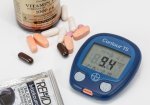Understanding Blood Pressure Overview
Including understanding blood pressure numbers, measurements or readings, results, levels and pulse rate

Blood pressure is a growing problem worldwide particularly because of the changing lifestyles and the accompanying ignorance on the subject. Blood pressure is defined as the force with which blood is exerted on the artery walls as it flows. It therefore follows that the softening, stiffening and constriction of artery walls differently impacts your blood pressure health. In essence blood pressure involves the entire cardiac system hence its association with cardiovascular disease and ailments.
Blood pressure is practically understood from two perspectives namely high blood pressure which is also hypertension and low blood pressure which is also medically known as hypotension. Blood pressure health is a consideration to people of all ages male and female and if left unchecked gives way to other diseases and conditions such as heart disease, blindness, brain damage, liver disease and even kidney disease.
Understanding blood pressure involves an appreciation of the causes of high blood pressure and the causes of low blood pressure. Hypertension causes are much easier to understand than hypotension causes. For this reason high blood pressure is classified into two namely essential hypertension whose causes are unknown in 95% of the cases and secondary hypertension whose causes are often related to underlying conditions such as kidney disease and heart disease.
Family history and genetics plays an important role in doctors understanding blood pressure causes in an individual. It is worthwhile tracing one's family line or genetics to check if there could be someone with high blood pressure somewhere along the way. Having someone in the family with blood pressure history raises the risk for others in the family to also suffer from high blood pressure at some point in life.
Physical exercises, salt, caffeine and nutritional supplements such as glucosamine play an important role in understanding blood pressure health. This is due to a medical association between exercice and blood pressure, caffeine and blood pressure, glucosamine and blood pressure as well as salt and high blood pressure. Blood pressure will increase or decrease because of the food that we eat. Sodium found in most salts such as table salt and sea salt as well as processed foods cause blood pressure elevation.
Abundant fruit and veggies consumption has been shown to lower blood pressure such as the association between celery and high blood pressure. This will also go along with other foods that lower blood pressure. Due to the importance of what people eat as it relates to blood pressure, doctors and dietitians are content with a certain hypertension diet known as DASH which is used as part of high blood pressure treatment.
Apart from drug blood pressure medications, some people use herbs that lower blood pressure as a perceived safer way of hypertension treatment avoiding the dreaded blood pressure medication side effects associated with pharmaceutical drugs such as Diuretics for high blood pressure.
Understanding blood pressure numbers, measurements and readings
Blood pressure is measured using blood pressure equipment such as the Omron blood pressure monitor series. There are also other accurate and clinically approved brand names such as Samsung, Relion, Lifesource and Wristech blood pressure monitors. These digital blood pressure machines display digital blood pressure numbers
The standard worldwide for measuring blood pressure involves taking blood pressure namely systolic and diastolic readings. The systolic number is the bigger number and is above the diastolic lower reading which is the smaller number as shown in the example - 120/80mmHg. Blood pressure measurements are interpreted in millimeters of Mercury. Mercury is a poisonous substance hence much reliance on digital blood pressure monitors that are mercury free.
The normal blood pressure numbers for an adult male or female even when pregnant is 120/80mmHg. This blood pressure reading can be slightly lower or higher and yet considered ideal blood pressure. Factors such as salt, physical exercise and caffeine intake mentioned earlier impact negatively or positively on blood pressure numbers or readings.
Understanding blood pressure numbers, measurements and readings in the context of low blood pressure will also involve an appreciation of the fact that low blood pressure diagnosis does not rely on blood pressure readings alone. Low blood pressure diagnosis heavily depends on signs of low blood pressure to conclude a diagnosis with certainty. In women the start of menopause also marks the beginning of raising blood pressure measurements on average above that of men. This means therefore that generally beyond the age of 50 women have higher blood pressure readings than men.
In understanding blood pressure numbers, it is also important to note that to arrive at accurate measurements several blood pressure readings must be taken. Doctors average your blood pressure readings taken over a period of time to determine what your blood pressure is. Today's sophisticated digital blood pressure monitors are able to store and average your blood pressure readings over a period of time.
Understanding blood pressure and pulse rate
Your pulse rate is the rate at which your heart beats and is measured in beats per minutes (bpm). Pulse rate which is also known as heart rate has a direct association with blood pressure. In fact digital home blood pressure monitors will also measure your pulse rate apart from your systolic and diastolic blood pressures.
Sophisticated blood pressure monitors will use your pulse rate reading to detect the presence of irregular heartbeat. Irregular heartbeat points to possible imminent cardiovascular disease or problems or even later in life. Checking of blood pressure pulse rate is standard practice during physical examination or in a medical emergency. Understanding blood pressure and pulse rate is important in guarding against ill health.
The following are some reasons for knowing your pulse rate;
- to see how well your heart is working
- to help detect causes of specific symptoms for example dizziness, chest pain and fainting
- to determine blood flow after an injury
- keeping up to speed with general health and symptoms

Return to Hypertension Guidelines from Understanding Blood Pressure
Return to High Blood Pressure Home from Understanding Blood Pressure
Disclaimer
Information contained on this website is not meant to replace your doctor's advice.
(c) All Rights Reserved. 2010-2018











